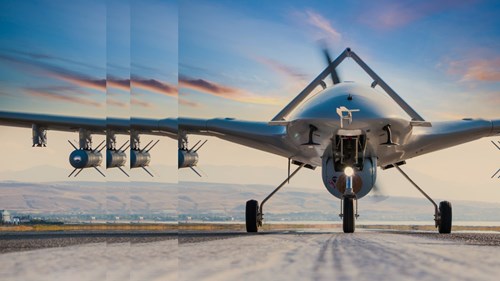Ordinance for autonomous vehicles: completion of a national legal framework in sight
On 23 February 2022, the German Federal Ministry of Digital Affairs and Transport (BMDV) launched the Ordinance on the Approval and Operation of Motor Vehicles with Autonomous Driving Functions in Specified Operating Areas (Autonomous Vehicles Approval and Operation Ordinance (Autonome Fahrzeuge Genehmigungs- und Betriebs-Verordnung), the “Ordinance”). The Federal Ministry of Transport, Building and Urban Affairs introduced the Ordinance in the wake of the 2021 amendments to the German Road Traffic Act (Straßenverkehrsgesetz, StVG), aiming primarily to complete the legal framework for motor vehicles with autonomous driving features in defined operating areas laid down in section 1d onwards of the Road Traffic Act. The new rules are no longer intended just to enable autonomous driving features to be tested on the basis of technical exemptions; instead, they to allow them to be operated on a regular basis in defined operating areas.
Regulatory content relevant in practice
The contents of the Ordinance are likely to be especially interesting to manufacturers and future providers of self-driving vehicles in defined operating areas, since the Ordinance addresses points that are particularly relevant in practice:
- approval and registration of autonomous vehicles in defined operating areas;
- detailed specifications on the (national) technical requirements for vehicles with autonomous driving functions in Germany and definitions of test and validation methods for checking compliance with the technical requirements during the approval procedure;
- structuring of the requirements for manufacturers, holders and technical supervisors already laid down in the amendments to the Road Traffic Act in 2021.
Approval of autonomous vehicles
First of all, the manufacturer has to obtain a type approval for the autonomous vehicle, which must be applied for at the Federal Motor Transport Authority (KBA), as set down in section 1e para. 4 of the Road Traffic Act. The requirements for this are now detailed in section 3 of the Ordinance. In particular, section 3 para. 2 of the Ordinance provides manufacturers with a list of rules for the national approval procedure regarding which declarations have to be made and which documents must be submitted to the Motor Transport Authority.
The scope of the Authority’s examinations is also defined in section 3 of the Ordinance. Its subsection 4 states that the technical requirements of Annex I to the Ordinance must be complied with, among other things. In this Annex I, the Federal Ministry of Transport, Building and Urban Affairs has drawn up a detailed list of requirements for motor vehicles with autonomous driving functions. This completes the paradigm shift initiated by the 2021 amendments to the Road Traffic Act, according to which autonomous driving functions are to be based on national technical regulations and not international ones.
The introduction of highly or fully automated driving functions within the meaning of section 1a of the Road Traffic Act was subject to considerable delays because the international technical regulations, namely the UNECE regulations (which are referenced in the European harmonised approval procedure), could not be adapted quickly enough. This meant that during the evaluation carried out in accordance with section 1c of the Road Traffic Act it was still stated in April 2021: “At present, no motor vehicles with automated driving functions in accordance with section 1a of the Road Traffic Act have been registered in Germany.” (Bundestag document 19/28800, p. 3). As a result, the intention of enabling highly or fully automated vehicles to be used in public road traffic in the near future pursued in the 2017 amendments to the of the Road Traffic Act missed the mark.
Due also to the lack of regulations at an international level, the technical requirements for autonomous driving functions in Germany have now been issued nationally in the form of an ordinance. After decades of harmonisation of the approval procedure at the European level and standardisation of the technical regulations at the international level, this can be seen as a paradigm shift in the motor vehicle sector, at least with regard to self-driving vehicles used in defined operating areas. This unique situation will be unfamiliar especially for OEMs outside Germany as soon as they start dealing with approvals for autonomous vehicles in Germany.
Approval of defined operating areas
At the second stage, the operating range in which the autonomous vehicle may be used has to be approved. The Ordinance also contains rules defining the requirements and procedure for this. According to section 7 para. 1 of the Ordinance, the operating range is determined by the owner of the autonomous vehicle, the requirements for the application being detailed in section 8 of the Ordinance. The decisive factor for approval by the competent authority is whether the operating range is suitable for operation of the specific vehicle (section 9 para. 1 No. 2 in conjunction with para. 2 of the Ordinance).
If both the type approval and the approval for the defined operating area have been obtained and appropriate motor vehicle liability insurance has been taken out, the autonomous vehicle can be registered. Further details on the applicability of the Vehicle Registration Ordinance (FZV) are set out in section 11 of the Ordinance.
Details of requirements for manufacturers, holders and technical supervisors
Both the manufacturer (section 12 of the Ordinance) and the holder (section 13 of the Ordinance) are subject to more extensive obligations. Particular attention must be paid to the specific requirements for technical supervision (section 1d para. 3 of the Road Traffic Act). In this regard, the question has already been raised several times whether any requirements are placed on the qualifications of technical supervisors and what these are. Section 14 of the Ordinance makes clear that the person appointed as a technical supervisor must be suitable for the tasks involved. Suitability is determined on the basis of high requirements regarding qualifications, which has already attracted considerable criticism in advance. Alongside other requirements, the person must have a technical degree or be a state-certified technician. This makes running commercial operations involving autonomous systems considerably more difficult and certainly does not promote the new digital mobility services to the extent actually desired.
Outlook
The Ordinance now expands on key requirements that were deliberately left out of the amendments to the Road Traffic Act introduced in 2021. In view of this, it does actually look like manufacturers and providers of mobility solutions may be able to use autonomous vehicles in defined operating areas in the near future. Yet this will probably still not go beyond vehicle testing in traffic, one of the reasons being the high requirements in section 14 Ordinance. At the time of the evaluation planned for the end of 2023 (section 1l of the Road Traffic Act) at the latest, it will have to be determined whether the existing rules in the Road Traffic Act harmonise with the more detailed requirements now provided in the Ordinance and offer a watertight legal basis at national level for operating autonomous vehicles (on a commercial basis) in defined operating areas on a regular basis.
Well
informed
Subscribe to our newsletter now to stay up to date on the latest developments.
Subscribe now









